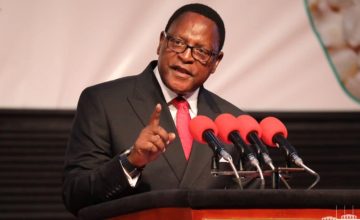Still in darkness
With only a year to go, government’s dream of connecting 30 percent of the population to the national grid remains far-fetched as most of the planned electricity power projects are yet to take off.
Government had under the National Energy Policy of 2003 planned to increase the number of people connected to electricity from four to 10 percent of the population by 2010 and to 30 percent of the population by 2020.

But despite the demand for electricity expected to double next year, it appears Malawians have been promised the moon, because projects that would take the access to electricity beyond the present 11 percent of the population to 30 by 2020 have hardly progressed.
The latest housing and population census says only 11 percent of the population have access to electricity. This ranks Malawi at the bottom of other countries in southern Africa, where neighbouring Zambia has a coverage of 31 percent, Tanzania 32 and Mozambique 28.
Even in the face of these touted projects, the Electricity Generation Company (Egenco) currently generates only 367 megawatts (MW)— an output that is way below the estimated demand of 719MW by 2020, according to the latest annual economic report (2018).
The Malawi Investment Compendium of 2014, which considers power shortage as an impediment to industrial development, lists nine energy projects which government identified for implementation to boost the power sector.
These projects include the establishment of mini-power areas whose feasibility studies were done, which pointed to the viability of such initiatives. generating stations in a number of
The nine include Chasombo Hydro Power Project (50MW), Chizuma Hydro Power (50MW), Chimgoda Hydro Power (50MW), Kholombizo Hydro Power (50MW), Fufu Hydro Power (50MW), Mpatamanga Hydro Power (300MW), Kam’mwamba Coal-Fired Power (300MW), Mbongozi Hydro Power (41MW) and Liwonde Power Project (128MW).
If all these projects materialise, the generation capacity could be far above the estimated demand, thus triggering an increase of people having access to electricity. But so far, none of the projects has taken off. Yet government has made more fresh promises.
In response to our questionnaire, the Department of Energy said it is sure that the country will double the generation capacity in less than five years, despite failing to achieve this for over a decade.
Chief energy officer Saidi Banda said all projects in question are on course and the country will start reaping benefits ‘soon’.
However, an energy expert, who is also country director for Community Energy Malawi, Edgar Kabayani, says the slow implementation of planned projects is a stumbling block to increasing people’s access to electricity.
“We have been too slow on some things and we have made more politically, than technically-sound decisions and pronouncements. Take the Kam’mwamba Coal-Fired Project, for example, (which, as a green organisation, we do not support); since 2014, there has been talk of money being found and we saw in the papers photos of people signing agreements, but has it taken off? Mbongozi Hydro Project, even after completing most of the things required, took them years to merely get a Power Purchase Agreement (PPA),” he said.
Asked on the update of the projects, Egenco had, despite several reminders, not responded to our questionnaire submitted five days ago.
Addressing investors in New York in 2014, Mutharika assured them that his administration would increase generation to about 700MW— yet, five years later, the country produces only half of that desired amount.





